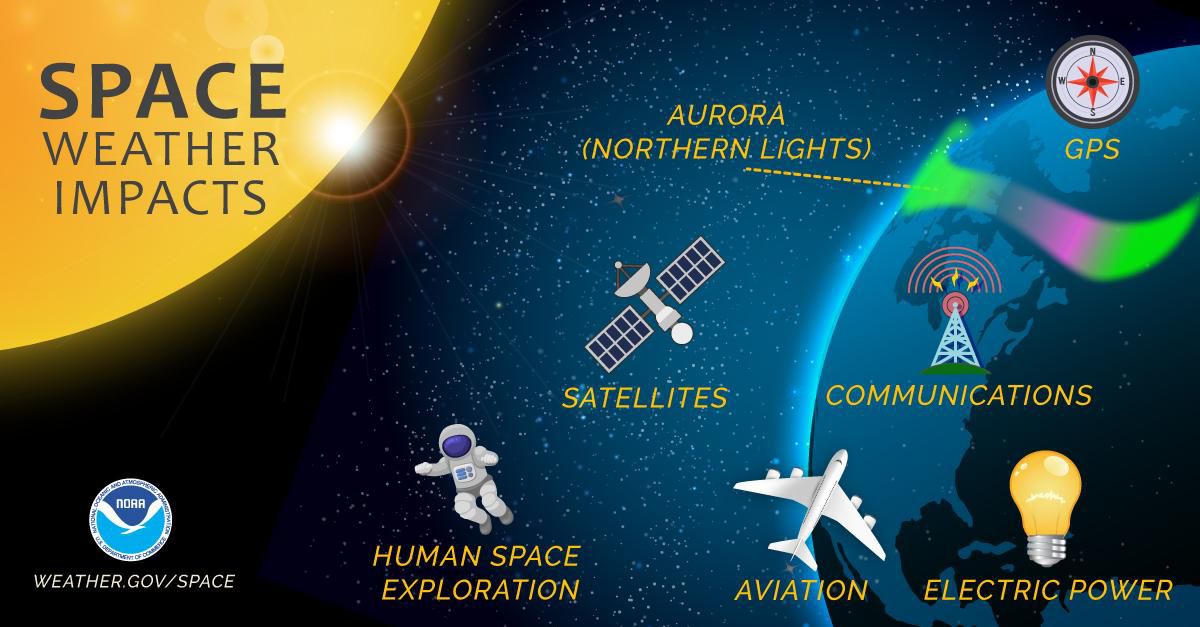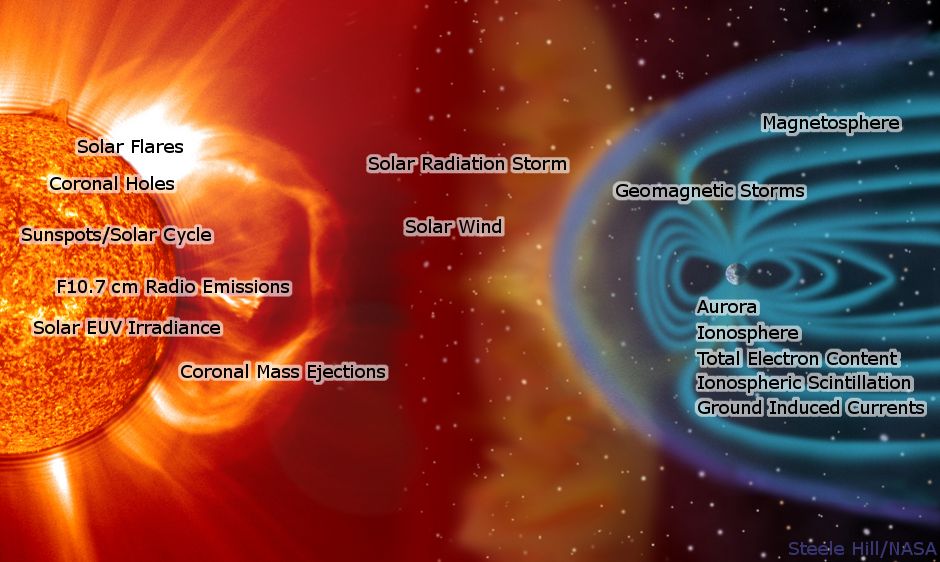Our sun is an interesting place. A glowing fiery ball of hydrogen and helium that without it, would limit the existence of life as we know it.
We on Earth care about the sun for the heat it provides Earth and those beautiful summer-time beach afternoons, but it also provides a much more robust weather pattern in space. And now, a new forecast issued from NOAA’s Space Weather Prediction Center says we could be set for some pretty active conditions heading into next year.
What is a Solar Cycle?
Before we dive into what the report says, we need to discuss the Solar Cycle and why it’s important.
Scientists are still trying to understand the inner-workings of the sun, and there are many mysteries left to solve. We have learned that the sun undergoes cycles, very similar to our seasons. These cycles last on the order of years, not months.
Remember, the sun is like a giant heat engine. It takes raw hydrogen atoms and converts them into helium as the 27 million-degree core produces megatons of heat and energy across the solar system. During the process of converting hydrogen to helium, the sun can emit sunspots or solar flares.
Sunspots look like dark holes on the surface of the sun, but are areas that are cooler than the surrounding atmosphere. In these sunspots, the sun’s magnetic field can poke skyward, heading deep into the sun’s atmosphere.
(NASA)
Solar flares can occur because of these sunspots. When the Sun’s magnetic field bursts into the atmosphere, the field lines can tangle and intertwine within themselves.
This can allow for a sudden burst of energy to be sent into deep space. This energy can cause major issues for spacecraft near Earth. It’s also what’s responsible for our Aurora’s here on Earth.
While sunspots and solar flares can occur anytime, scientists determined they trend toward specific years. They discovered that every 11 years, the magnetic poles of the sun switch spots, meaning what’s north now becomes south, and what’s south becomes north. This 11-year period is what we call our Solar Cycle.
During this process, the solar activity varies. As the poles get ready to flip, solar activity diminishes. This is what we call solar minimum. Once the poles flip, solar activity ramps up again, peaking roughly halfway through the 11-year cycle period. This is what we call solar maximum.
Activity will ramp down as we head toward the end of the 11-year cycle, as the poles get ready to flip yet again. Once the poles flip, a new cycle begins.
So what does the new forecast hold?
In Dec. 2019, NOAA’s Space Weather Prediction Center released it’s solar activity report for the current Solar Cycle 25.
Scientists predicted this cycle would likely be weaker than normal, with a peak of solar activity occurring between 2023 and 2026. The panel also forecast a range of 95 to 130 sunspots during the forecast peak of solar activity.
This week, the SWPC released an updated forecast saying that Solar Cycle 25 will likely be stronger than previously forecast with an increase in sunspots within the first 10 months of 2024.
An increase in solar activity next year could mean an increase in aurora spottings on Earth. It could also affect communication and electrical grids during solar storms.

(NOAA)
“We expect that our new experimental forecast will be much more accurate than the 2019 panel prediction and, unlike previous solar cycle predictions, it will be continuously updated on a monthly basis as new sunspot observations become available,” said Mark Miesch, a CIRES scientists at NOAA’s Space Weather Prediction Center. “It’s a pretty significant change.”
Last year’s solar cycle was the weakest in modern history according to NOAA, with 116 sunspots peaking during the cycle, below the average of 179.
Miesch also adds that no two solar cycles are ever the same. Between the differences in solar magnetic variability, along with the frequency and severity of events, impacts to electrical grids, GPS and spacecraft can vary throughout each event. It’s hard to compare the potential impacts 2024 could see to past years.
In Feb. 2022, a missed forecast on a solar storm caused newly launched Starlink satellites from SpaceX failure to reach orbit. 40 of the 49 satellites burned up upon reentry into Earth’s atmosphere.
Our team of meteorologists dives deep into the science of weather and breaks down timely weather data and information. To view more weather and climate stories, check out our weather blogs section.

